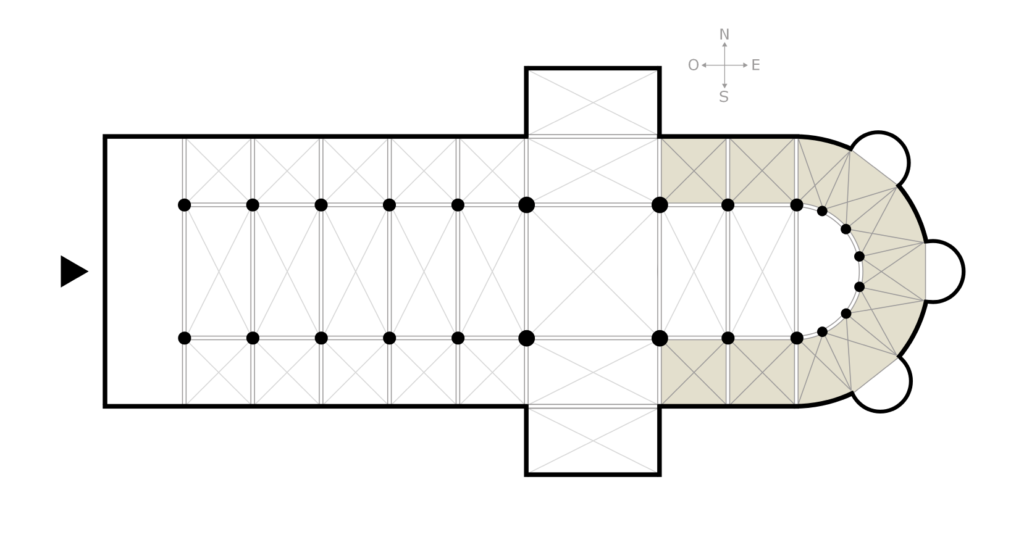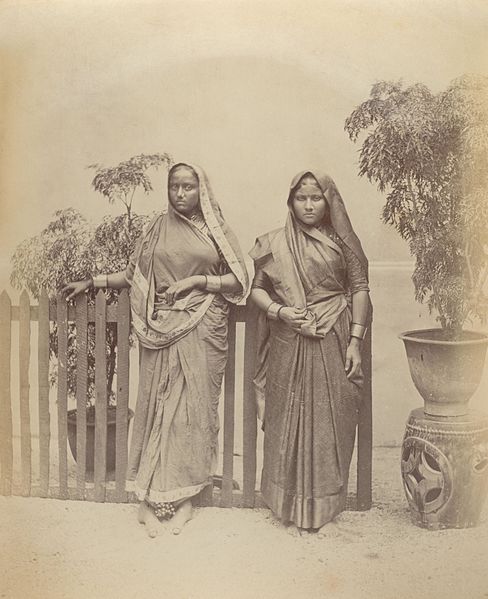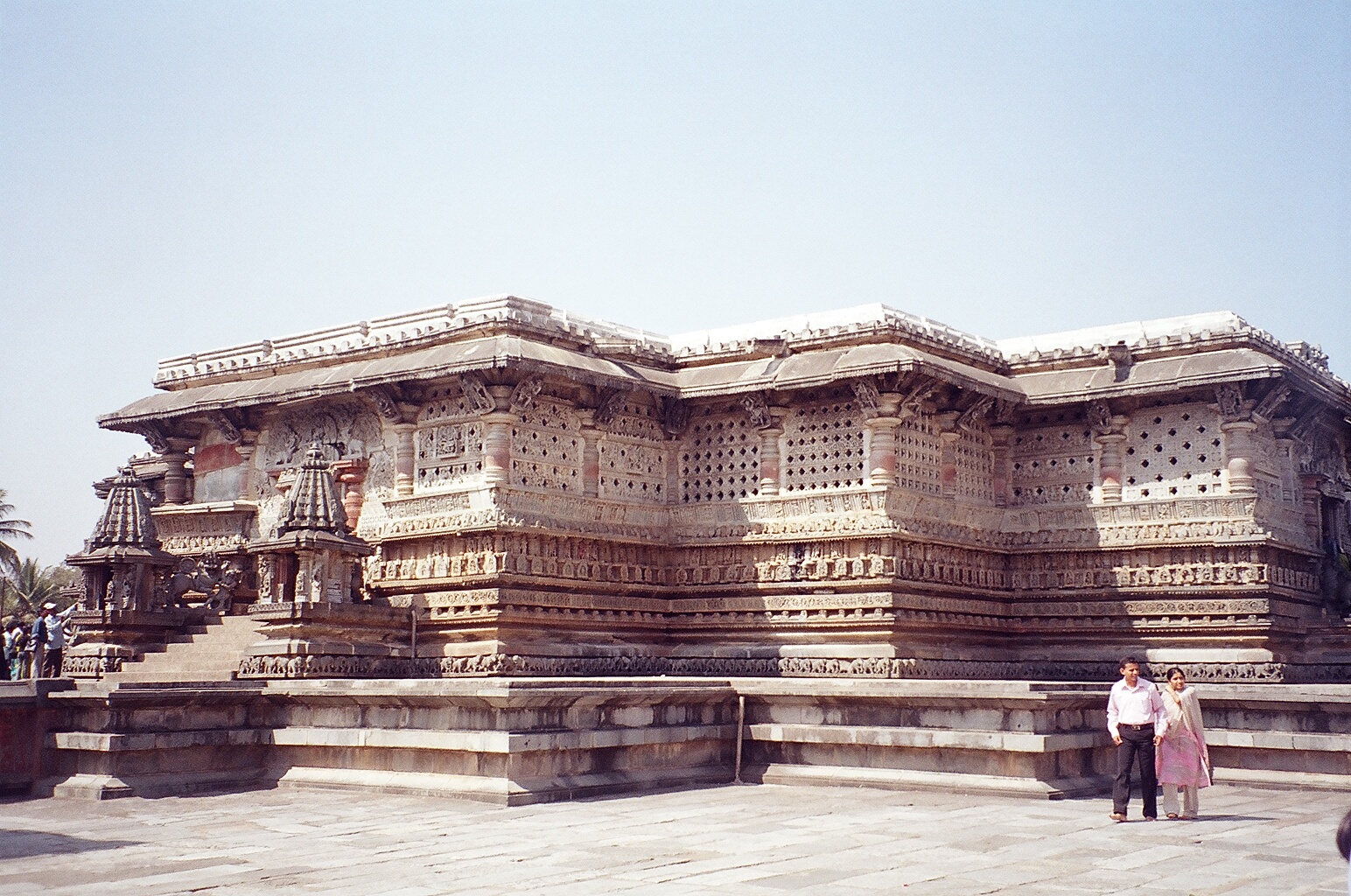
5 Types of Historic European Architecture
How European Architecture has evolved across the centuries
Architecture surrounds us and influences us more than we admit.
The modern architecture with glass, tall skyscrapers and concrete is but a shifting trend with a few aspects that have repeated themselves throughout history.
These influences can be in the various old monuments across the world.
This week we shall be focusing on Europe and its architecture.
Everyday I post about a new historic monument along with a short write up about it on GiGlee’s social media channels. My captions have words like Gothic, Baroque, Romanesque, Renaissance…. What do they mean? In this article let us uncover these styles and also learn how to identify monuments based on their architectural styles.
There are plenty of architectures across Europe. This week we shall be focusing on 5 of the most famous ones leading up to the 19th century.
Each of these styles are further bifurcated into early, middle and later periods. I have tried to keep the architectural jargon low and thus haven’t mentioned which architectural element was added in which period of a particular architectural style.
Should we learn the basics then?
Here are the 5 Types of Historic European Architecture
Classical Architecture
You can say Classical architecture is the mother of all architecture in Europe. It has continued to influence our lives and the architecture around us. It is the bases of what we perceive architecture to be.
Classical Architecture was born with the Greeks, it evolved in the Hellenistic period and slipped in slumber during the dusk of the Roman Empire. However as history has shown us, classical architecture might have been forgotten for a while but it was never lost.
The Greeks liked rules and were very devoted to their Gods. In their civilisations, Gods and Goddesses held prominence. Their temples were no less important.
This ideology of the Greeks was what laid the foundations of the Classical architecture. It was the need to find harmony between humans and nature that led to the clear open structures that can be explore in Greece today.
Picture Credits: Wikipedia Commons
The Athena Acropolis is supposed to have had a 40ft tall statue of the Goddess of Wisdom, Athena. The acropolis or temple might have been lit with natural light and built wide enough to accommodate many people.
The Greeks applied symmetry and mathematics to construct their buildings. Everything was mathematically interrelated. Taking the Athena acropolis as an example again, the columns here appear be to standing straight but are not. They tilt a little inwards.
Doesn’t this remind you of the Taj Mahal built centuries later in India? It’s minarets appear straight too but lean outwards.
This logic and symmetry was challenged by the Hellenistic period. This period is the time after the death of Alexander the Great till the rise of the Roman empire.
Hellenistic structures were bigger and less symmetrical. These structures might even be called secular. This may be due to the fact that the Greeks had travelled to Asia and a few had assimilated into the culture there.
During the Roman times, Greek architecture wasn’t lost but evolved. The Romans invented concrete which they would use as building material especially for the world famous monument the Colosseum, which stands to this day in the heart of Rome.
How can you recognise a Classical Structure?
The Classical architecture has a unique look.
There are three main types of columns: the Doric, the Ionic and the Corinthian.
Picture Credits Via Flickr
Picture Credits Via Flickr
Picture Credits Via Flickr
These columns hold up, something known as the entablature which is the beam that runs across a group of columns. The pediment sits on top of an entablature. The pediment is the triangular structure on the main facade which is often decorated to depict a story.
Before this, the Greeks would use timber to make pillars which would support beams. Timber was not long lasting and so they adapted to marble and stone. These materials helped them built the tall structures we associate these ancient civilisations with. The invention of concrete was an added bonus for the Romans.
Classical architecture hasn’t changed a lot from these Roman times. You’ll find many classical structures around the world built during and after the 18th century especially in the USA.
These structures are called the neo-classical structures. They are not very fancy and are clean yet grand.
Romanesque Architecture
After the Roman times, Europe slipped into the Dark Age. When Charlemagne was crowned in 800AD, Europe saw light again. It began to change and move into a new era. An era which saw the emergence of the Romanesque style of architecture.
The word ‘Romanesque’ might be coined using the word ‘Roman’ as an attribute to the Roman elements used by this architectural style. However this style didn’t evolve from the long forgotten Classical Architecture but from the Byzantine Architecture.
Just so you know, the science behind the classical architecture was lost during the Dark ages. It was uncovered much later.
Romanesque style is the transitional phase from the simple architecture to the flamboyant Gothic style.
You might get confused between Romanesque and Gothic due to their similarities but there are a few subtle differences between these two styles.
Romanesque architecture respects the Roman concepts of rounded arches and vaults that are typical of Rome but amiss from the Greek architecture.
A vault is a roof in a form of an arch. The Romanesque style inculcates what is called a groin vault. A groin vault is made up of two arches that cross each other at right angles.
Picture Credits: Wikipedia Commons
You’ll find a more complex type of vault in Gothic structures too.
You must be wondering: If the Romanesque architecture is so similar to Gothic as well as Classical architecture, what are the elements that sets it apart?
The key difference between the Romanesque and Gothic structures are the walls and the stained glass windows.
The Romanesque churches typically have thick walls. These thick walls make it difficult to have tall wide windows with stained glass.
Romanesque architecture uses piers which are pillars. These pillars use masonry vaulting or groin vaulting. Masonry vaulting uses bricks to built a series of arches. And as explained before, a groin vault is a criss cross between two arches.
Romanesque buildings especially churches due to these vaults have a covered walkway in technical terms called an ambulatory.
Picture Credits: Wikipedia Commons
The decorations on Romanesque structures are also very subtle. They have patterns and simple lines with little to no floral design.
Romanesque churches are often brightly coloured and depict various stories from the Bible to aid the illiterate populace.
The best example of Romanesque architecture is the Square of Miracles in Pisa, Italy. This square houses the historic Pisa Cathedral and the famous Leaning Tower of Pisa. These two structures are excellent examples of Romanesque style. They have rounded arches and symmetry but at the same time are beautifully painted from the inside.
In Britain, Romanesque architecture is called Norman architecture since it was introduced by William the Conqueror who was the Duke of Normandy in England and a few parts of France.
Gothic Architecture
If you observe the Gothic structures, you’ll find they look very similar to the Romanesque ones. And that is exactly what Gothic was. This architectural style evolved from the simple Romanesque to the elaborate and decorative style that we today call Gothic.
Where does the word Gothic originate from?
It’s hard to pinpoint. The word ‘Goth’ though was used for a group of East Germanic people. There seems to be no co-relation between these two.
In the recent years, the Gothic style has been characterised by a certain sense of darkness and grim emotion. In the 12th century, this wasn’t the case.
Moving from the smaller windows that Romanesque architecture characterised due to its thick walls, the Gothic welcomed the light.
If you look closely, you’ll notice the thin walls Gothic has. These thin walls made it easier to incorporate large windows.
As Gothic architecture was supposed to be sharp, pointed, larger than life and decorative, these windows weren’t simply covered with glass. The windows were painted to depict the different stories from the Bible just like the painted walls in Romanesque churches. Since most people in the Middle Ages were illiterate, this proved to be a method for them to learn the stories from the Bible. After all a picture speaks thousands of words.
The creativity of artists knew no bounds when it came to these stained glasses. The ones that survive today can take your breath away. The best example of stained glass might be the Sainte Chapelle in Paris. It is indeed a marvel.
The other popular element of this style is the Rose window which can be seen on most churches built during these times. The Rose window is mostly on the main facade of the church. It is a circular window with stained glasses divided by stone work.
How do you place the hundreds of pieces of stained glass needed to make a window? They could glue these glasses together and leave it at that but that wouldn’t last long.
A tracery helped resolve this issue. What is a tracery? Did you notice the stone work that seems to weave like a creeper into the window especially the Rose windows we spoke about?
These traceries were of stone making it easier to hold the stained glass pieces together. And as we know, they have done a good job for hundreds of years.
The Gothic architecture, that originated in France during the 12th century, spread across Europe and died away by the 16th century.
Don’t be fooled though. Gothic wasn’t lost forever. In fact, it made a comeback in the 18th and 19th century especially in Victorian Britain. At this time Britain owned most of the world.
It is no wonder that Gothic spread far and wide from the shores of the European continent and travelled across the world.
In Bombay, you’ll find these humongous Gothic structures. They have been adapted to the warm weather of course and incorporated a few Indian elements. That they say is Bombay Gothic.
How do you recognise a Gothic structure?
The pin-pointed spires are a dead giveaway. And most of the times, these spires are what catch your eye.
A flying buttress (I quite like saying that, such an exciting name) is also a prominent part of Gothic. This buttress looks like an arch jetting out from the walls on the outside of the structure. Hence the name, flying buttress. These buttresses are a way to deflect the pressure exerted by the slim arches. They are the reason for the slim arches that support Gothic structures.
As for it’s interiors, there are these peculiar ribbed vaulting and fan vaulting patterns on the ceilings of the church. These vaultings are beautiful and elaborate especially the fan vaulting which make the interiors look more so decorative and elaborate.
Picture Credits: Wikipedia Commons
Picture Credits: Wikipedia Commons
I hardly have to say, Gothic architecture is my favourite style of architecture.
You’ll find it on a few famous churches and castles in the world. The York Minster, Westminster Abbey, Houses of Parliament in Britain to the old Notre Dame Cathedral, Sainte Chapelle in Paris and the Barcelona Cathedral in Spain are some of the best known examples.
Renaissance Architecture
The Renaissance Architecture came with the Renaissance. Florence in Italy was at the heart of this change.
Gothic was ditched for the old classical architecture which was back in vogue. They as yet didn’t know the secrets of classical architecture. Architects at this time had to relearn what the old Romans and Greeks knew.
Filippo Brunelleschi was the first Renaissance architect. And his creation, the dome of the Florence Cathedral is one of the best examples of early Renaissance architecture.
To build this dome, Brunelleschi took inspiration from the Classical architecture, put his own logic to it and built a dome. This mixture came to be the new Renaissance style.
Many other architects added their own twist to the Renaissance style. This meant that there is no strict rule that is symbolic of Renaissance architecture. It is the architecture built between 1400 to 1600 AD.
The most basic elements of Renaissance architecture might be the symmetry of the doors and windows, the domes, arches, the pediments, the niches decorated with statues and the classical columns.
Not much can be said about the Renaissance style apart from this.
Baroque Architecture
The baroque architecture grew from the reformation that was shaking Europe in the 16th century. As Protestant Reformation spread and people began to read, thanks to the Printing Press, the Baroque age symbolised the Roman Catholic Church.
The architecture built during this age is called Baroque architecture. It is not a typical style like the Romanesque or Gothic but more of a descriptive world for architecture built at this time up till the 18th century in Europe.
As you travel across Europe, you’ll see multiple variations of this style.
How do you recognise a Baroque architecture in that case?
I think Baroque stands out due to its peculiarity than any other element of design. The sole principle of this architecture is the sense of intense motion. All the elements of this design appear to be moving from the columns to the images on the walls.
Baroque prides itself to be a little extra when it comes to design. You need to pay very close attention to the basic elements of architecture like columns, domes, volutes which are a part of Ionic columns from the Classical architecture and other scrolls that make a column.
All these pieces of architecture are set free so to say, from the shackles of symmetry that the previous architectures seem to hold dear. The symmetry is lost to distortion and exaggeration.
Columns are twisted, manipulated, broken and accentuated with gilded gold.
The altar in churches are wider so that every person sitting can see it. The cupolas have a stream of light that floods into the church giving it a more heavenly look.
The elaborate paintings are also very dramatic and the frescos with people and other elements are all in motion narrating a story with bright and eye catching colour.
The gilded gold accentuates these effects as well and is more often than not very elaborate and gaudy.
All in all, the Baroque is an art that breaks rules and adds manipulation, distortion, motion, flamboyance, as well as plays with the light and gives a very heavenly feel.
The later Baroque period is often referred to as Rococo. It is more decorative and dramatic than the previous Baroque styles.
Baroque architecture can be found in the St Paul’s Cathedral built by Sir Christopher Wren in London and the opulent and beautiful Palace of Versailles in France. Other examples are the marvellous St Peter’s Basilica in Vatican City and Zwinger in Dresden, Germany. The Versailles Palace might be the best example of the lot though. This Palace has captured the imagination of many and inspired the millions of tourists that walk through its halls every year. It is one of the best and most recognisable Palaces in the world.
It was surely a very elaborate lesson, wasn’t it? Let me leave you with this heavy dose of architecture! I hope you can digest it before next friday:)
Till then take care, enjoy the architecture around you and share ‘5 Types of Historic European Architecture’ with your pals.
And if you enjoyed ‘5 Types of Historic European Architecture’ you might also like to read:
The 7 Architectural Facts about the Taj Mahal
What’s inside the Buckingham Palace?
The Hall of Mirrors in the Palace of Versailles
NOTE: The Bibliography for this post is missing. Please help us credit the sources that deserve it. If you believe your work, or a work you know of needs to be cited here, please write to editor@giglee.in to inform us. DISCLAIMER: The intention of this article is not to hurt anyone's sentiments. The thoughts expressed in the article are purely those stated by the author of the work. The information provided on this website may not be complete, reliable, accurate and/or updated. The details you share with the website will not be shared or sold. We are not liable if in case of theft, your data is stolen. The content on this website is provided without any warranties whether express or implied. If you have a doubt, query or complaint please write to editor@giglee.in and we shall respond as soon as possible.


















